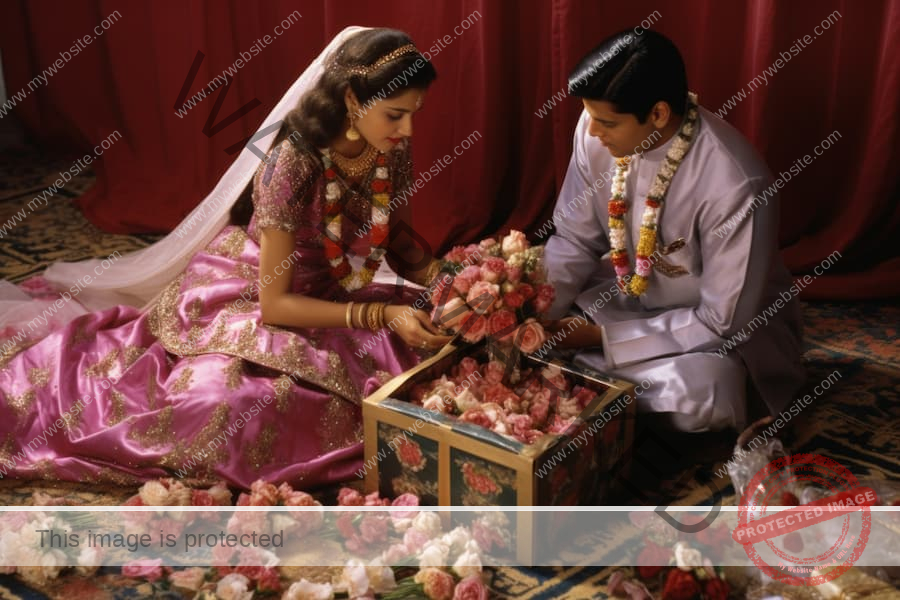The passing on of garlands, the application of sindoor, tea ceremonies, and the seven steps around the holy fire are just a few of the important rituals that are frequently included in Asian wedding celebrations, which are filled with culture, symbolism, and history. These traditions stand for dedication, love, and the unification of two separate households. Pre-wedding activities like Mehendi or Sangeet are examples of elaborate celebrations that could continue for many days. Clothing is important; conventional clothing reflects refinement and cultural history. Asian Wedding Clothes Birmingham provides a large assortment of exquisite gowns appropriate for any event for people who wish to respect these traditions.
Rituals before the Wedding
Engagement or matchmaking ceremonies are among the pre-wedding customs that precede the majority of Asian marriages. This may be referred to as the Roka or Mangni in Indian and Pakistani traditions, when family formally approve of the relationship. Matching consultations, in which the couple’s astrological signs are matched using the BaZi (Eight Characters), can occur before Chinese marriages.
The Ubtan Ritual and Haldi Ceremony
The Haldi (or Ubtan) ritual at Indian and Pakistani shadi includes smearing the bride and groom’s bodies with turmeric paste. This vivid yellow ointment is noted to fend off evil spirits, provide prosperity, and cleanse one’s skin. Participation from the circle of relatives and near friends frequently transforms it into a mild-hearted, satisfied event full of song and giggling.
Ceremony of Mehendi
In South Asian traditions, the bride’s arms and feet are painted with mehendi as a part of the joyous pre-wedding custom referred to as the Mehendi rite. The elaborate patterns stand for happiness, beauty, and spiritual growth. Singing, dancing, and an acknowledgement of sisterhood and family ties are frequently included in this ritual.
Music Night or Sangeet
In Indian and Pakistani weddings, the Sangeet is a vibrant musical nighttime. It’s a possibility for the bride and groom’s family to perform songs and dances, from time to time with pre-planned choreography. Beyond just providing leisure sports, this event builds bonds between the 2 families and promotes friendship.
The Bridal Procession
Cultural variations in the marriage ceremony are splendid. As a sign of her adjustment to her new family, the bride frequently departs her family’s residence for the duration of a Bidaai rite through Indian marriages. It is a poignant occasion that indicates a chief shift in lifestyles. The Chut Nyuk rite in Chinese includes the bride getting pushed in a embellished bridal vehicle from her domestic to the groom’s.
Groom’s Arrival Ceremony or Baraat Entrance
The baraat is one of the most exciting aspects of an Indian or Pakistani wedding. With dancing, song, and a joyous entourage, the groom arrives at the venue in a luxury vehicle or on an embellished horse.
Garlands or Floral Rituals Exchanged
The Jaimala or Varmala is a custom in Hindu and Sikh weddings, where the bride and groom change garlands of plants. This represents their embrace as life pals. Typically composed of clean marigolds, roses, or jasmine, the garlands represent affection and admiration for one another. Flowers are also used appreciably in ceremonial settings and the bride’s ornamental headpieces at a few Chinese.
Ritual of Sacred Fire
The Saptapadi, wherein the couple walks around a sacred hearth for seven consecutive times, with every step representing a vow or promise, is one of the most essential Hindu ceremony customs. The Mangal Phera, every other name for this rite, represents the couple’s non secular bond.
Chinese custom of the tea ceremony
A key component of Chinese weddings is the tea ceremony, in which the couple serves tea to their elders and is rewarded with advantages, presents, or colored envelopes (hongbao). It represents deference, appreciation, and the legitimate welcome of the new member of the family. Both the bride’s and groom’s families can also host this ceremony, which is now and then followed by bowing and kneeling as a display of admiration.
Final words
UK wedding customs are steeped in faith, familial principles, and history. Every ritual has a distinct meaning that adds to the general holiness and festivity of marriage, whether it involves offering tea, exchanging garlands, or putting mehendi.
Visit Manhwa for more informative blogs

